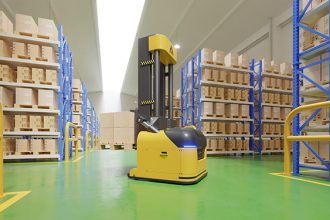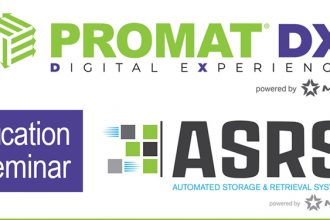
Considering an automated storage and retrieval system (ASRS) to enhance your facility’s inventory density? If so, consider spending 30 minutes viewing the recording of “Determining What ASRS Solution Is Best For My Application,” a free, on-floor seminar presented at MODEX 2020 this past March in Atlanta. Attendees joined members of the ASRS industry group of MHI to get answers to those questions (the subsequent recording of the slides and audio are made available to those who were unable to attend, or who wish to see the session again). The seminar’s panelists review the factors that should be considered prior to selecting an ASRS, the types of solutions available, and how to determine which kind of ASRS system is ideal for a given application.
Key Considerations
The session advises end users to first determine the characteristics of the items to be stored in the system, including dimensions and weight, storage condition requirements (ambient, refrigerated, frozen), and their ability to be conveyed with or without first being placed in a tote. Also important when selecting the appropriate solution is order data: how many orders are filled in a day, how many picks are required, how many stock keeping units (SKUs) are active in a day, how many items are to be stored in the system, what’s the typical throughput during a normal or peak season, and how frequently are items picked (SKU velocity).
Other considerations include determining where the ASRS will be located within the facility and the available space in that area, both overhead and in terms of square footage. If a new system is intended for a new building, it’s critical to plan for the ASRS prior to finalizing the facility design in order to ensure its optimal positioning. Further, think ahead about possible future expansions and how to allocate space in proximity to the ASRS installation to support the later addition of more systems. Finally, think about how the system will (or won’t) be integrated with any existing warehouse management software (WMS), warehouse control software (WCS), or warehouse execution system (WES).
Available ASRS Options
The session also details how each technology works, what the most frequent applications are, and the typical performance metrics. The overview covers:
- Unit-load pallet storage and retrieval machines (SRMs) are equipped one crane per aisle of racking and outfitted with forks for full pallet handling. These systems can access storage positions up to three pallets deep. Often used for full pallet dispatch, feeding of a case buffer, or to replenish pick slots, these systems offer medium level throughput and medium storage density of a high number of SKUs.
- Unit-load pallet storage and retrieval machines (SRMs) with a satellite unit (instead of forks) permit virtually unlimited pallet storage depths, as the satellite travels on rails to reach the stored loads. Used for the same types of applications as forked models, these systems likewise offer medium throughput, but at a higher storage density of a medium number of SKUs.
- Unit-load pallet shuttles incorporate vehicles on individual levels, each bringing pallets up and down aisles that are then lifted or lowered by an integrated carrier to deposit the load at its destination. This system provides very high throughput and very high storage density, meaning it’s typically used with a lower number of SKUs.
- Mini-load ASRS, for case or split-case picking operations, are also crane-based machines that handle lighter, smaller loads. They provide medium throughput and medium storage density of a high number of SKUs.
- Mini-load shuttles for case or split-case picking operations provide high throughput and medium-high storage density of a medium to high number of SKUs. Cases or totes stored within the shuttle are typically delivered to goods-to-person stations and yield high picking rates.
- Cube storage systems deploy bins stacked one on top of another, eliminating both aisles and dead space over stored loads. The bins are retrieved by robots and delivered to a picking station. This yields medium-high throughput rates (dependent on the number of bots and picking stations incorporated), with high storage density of a high number of SKUs. It is ideal for storage of lightweight items in each-picking applications.
- Horizontal carousels are typically implemented in a pod of three or more units. These machines store small pieces or parts in tightly compressed bins and operate similar to a merry-go-round. A single operator moves between the units to pick required items as the storage bins are presented. Ideal for low ceiling height facilities and each picking applications, they provide medium-low throughput, medium storage density, and hold a medium-low number of SKUs.
- Vertical carousels offer a compact footprint and operate similar to a Ferris wheel, presenting items stored on fixed shelves or trays. Often used for parts storage or in hospitals to store supplies, they are capable of holding heavy, dense parts as well as small items in bulk. They provide medium-low throughput, medium storage density, and hold a medium-low number of SKUs.
- Vertical lift modules (VLMs) can be constructed to fully utilize very high ceiling heights and are self-contained. They dynamically store contents based on their height, tightly compressing each storage tray to maximize density. Trays are accessed by a central inserter/extractor and presented to the operator at a fixed opening. They provide medium-low throughput, medium storage density, and hold a medium-low number of SKUs.
The presentation additionally offers insights into the maximum and minimum height ranges of each system, as well as their costs (relative to each other) and the typical timeframe for their design, engineering, installation, and commissioning.
Looking to learn more about the different kinds of ASRS available? Check out this recent post, “Need Dense Storage? There’s An AS/RS For That.”



